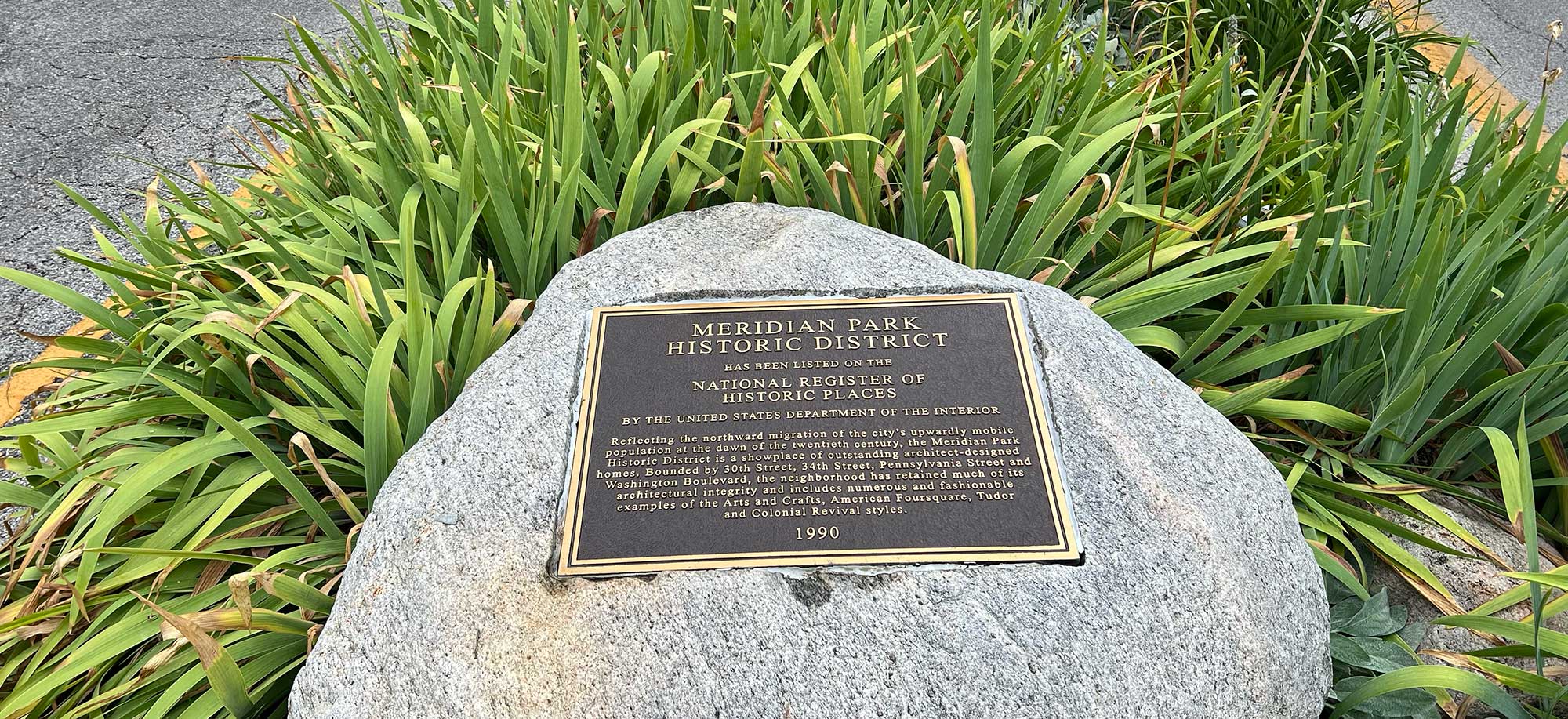Historic Meridian Park
Boundaries
- North 34th St.
- South 30th St.
- East Washington Blvd.
- West Pennsylvania St.
Tour this neighborhood
HUNI offers a self-guided tour of this neighborhood through PocketSights.
More about Meridian Park
In addition to featuring architecturally significant homes, the neighborhood was also home to several well-known architectural families: Arthur Bohn and Anton Vonnegut. Bohn was a founding partner, with Bernard Vonnegut Sr. of the firm Vonnegut and Bohn. Bohn is credited with the design of Indianapolis landmarks such as the Anthenaeum (401 E. Michigan), the William A. Block Company, and the Fletcher Trust building.
Environment
The Historic Meridian Park neighborhood features some of Indianapolis'—and the Midwest's—best examples of American Arts & Crafts Architecture. While Meridian Park contains a noteworthy collection of American Four Square, many other styles of craftsman homes can be found including examples of Tudor Revival, Colonial Revival, Mission (Spanish) Revival, American Bungalow, English Country Manor, Neo-classical, Flemish and Italianate Revival styles. The vast majority of the homes show the influence of the Craftsman movement. Every building reflects the use of natural materials such as brick, stucco, stone, and tile, as well as emphasizes the visible structural elements such as beams, abundant windows, large overhangs and inviting front porches.
Anton Vonnegut built a home in the neighborhood, but one of the relatives probably did the design. Anton, himself, of the generation of Bernard, was involved with the Vonnegut Hardware store, and later sales in the Vonnegut Machinery Company.

History
The area was farmland until the turn of the century. Then a bridge over Fall Creek and the personal automobile made commuting Downtown much easier. This suburban environment, distanced from the noise and smoke of Downtown, quickly made this area an exclusive and fashionable neighborhood.
Automobile company executives, bankers, builders, politicians, and clerks saw Historic Meridian Park as an ideal environment to raise a family. The houses, reflecting a change in taste, were designed for family living. Early 20th-century architecture reflected the philosophy that a modern home should be more functional than formal. The small multiple parlors of the Victorian era house were replaced by spacious living rooms with large hearths.
Over the years urban flight left numerous homes in disrepair and cut up into apartments and multi-family dwellings. Many caring and committed neighbors have brought these magnificent old homes back to their original glory. Today, Historic Meridian Park is a mixture of lifelong residents and relative newcomers. Many of us were first drawn to the fine old homes. Who could resist the romance of homes with Rookwood tile fireplaces, leaded and stained glass windows, hardwood floors and cabinetry, sleeping porches and welcoming front porches?
And the people are the reason we've stayed. Adopting an older house in a city neighborhood takes an open mind and an interest in community. We're a vibrant urban community with an active Neighborhood Association.
Historic Designation
The eclectic and spirited mix of residents accepts the challenges and rewards of creating a strong community. In 1988, residents undertook a detailed documentation of the area's history and architecture. As a result, in 1990 Historic Meridian Park was placed on the National Register of Historic Places, based on this formal application on this page of the HMPNA website.